Here are some photographs of Mayfield Cave in Sutton County, Texas, commercialized in 1960 and since then known as the Caverns of Sonora. It’s an approximately 7-1/2 mile limestone cave system that began forming in the Early Cretaceous. In addition to the usual stalagmites and stalactites, the cave has extensive flowstone formations, crystal deposits, helictites, tubular stalactites, travertine draperies, and coralloids.
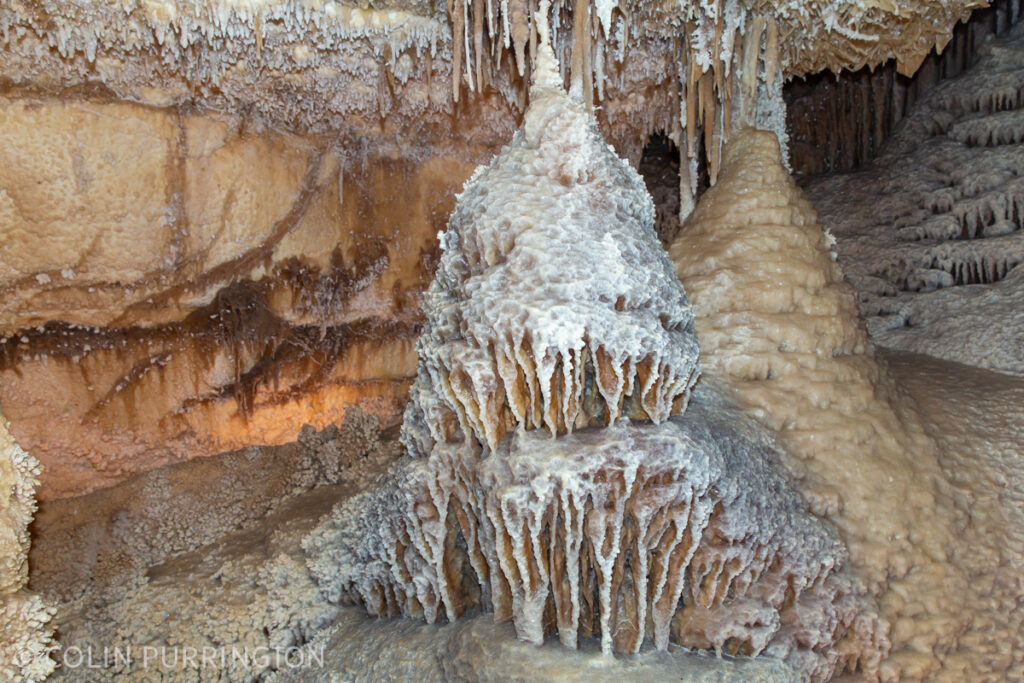
This formation looks like a frosted dessert. I wonder what caused the more recent accretions to be white.

Almost every surface was wet and dripping, so this cave is active and growing. These popcorn-like speleothems are corraloids.

These tubular stalactites (“soda straws”) are hollow but form into normal stalactites if the hole becomes clogged. Apparently quite rare in commercialized caves such as this, so it’s good that these were out of reach to most people. The longest ever found (Wonder Cave in Malaysia) is over 9 meters long.
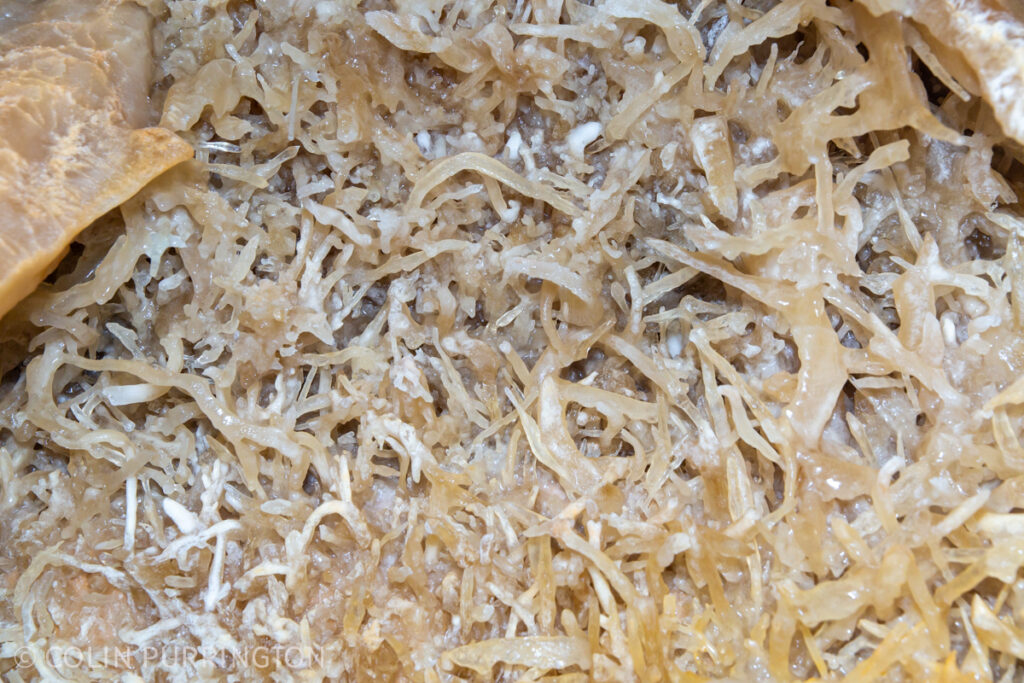
Helictites are formed when capillary pressure forces very small amounts of water onto one side of a structure. The cave was littered with these formations.
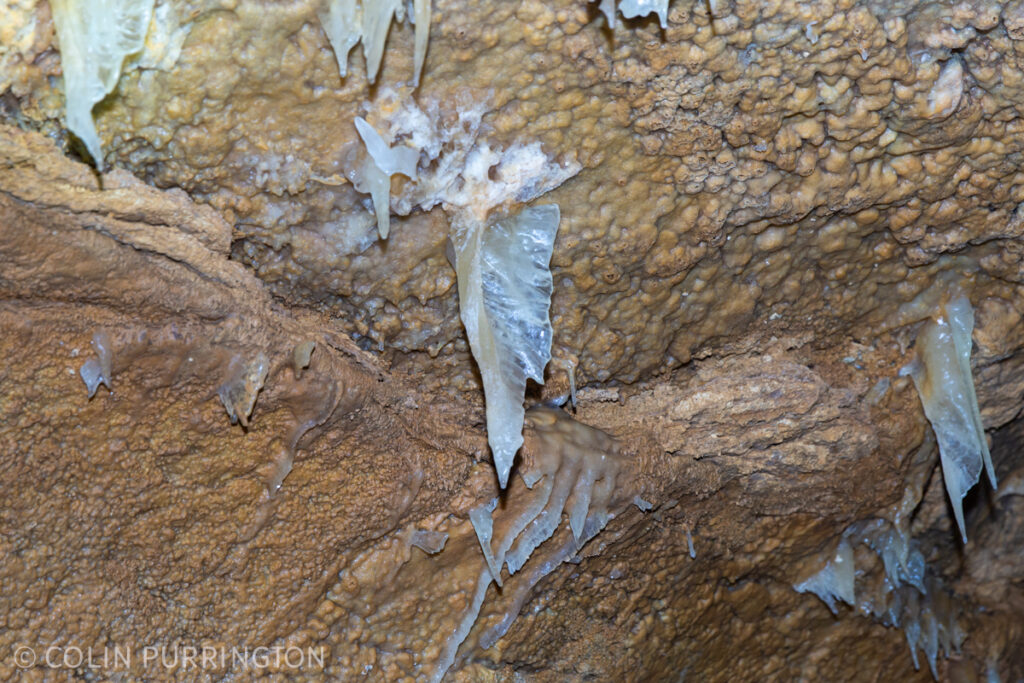
Fishtail helictites were everywhere and in multiple different hues due to different mineral contents.
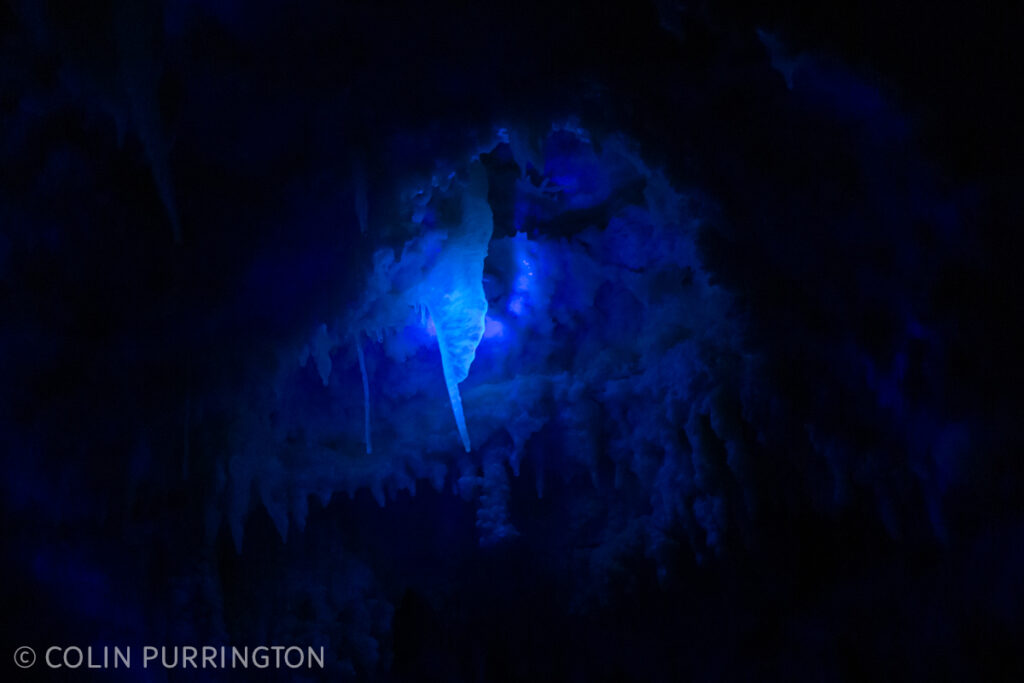
Here’s a fishtail helictite illuminated with a UV flashlight. Thanks to excited impurities, it continued to emit light after the flashlight was turned off.

This group of helictites once contained the crown jewel of the cave, a two-bladed speleothem that resembled a butterfly. It was damaged in 2006 by some guy (of course it was a guy) who snapped off most of the right wings. You can make out the left wings a bit to the left of center. Here’s a link to what it used to look like. Thanks to that incident there is now a Texas law that makes vandalizing caves a felony.
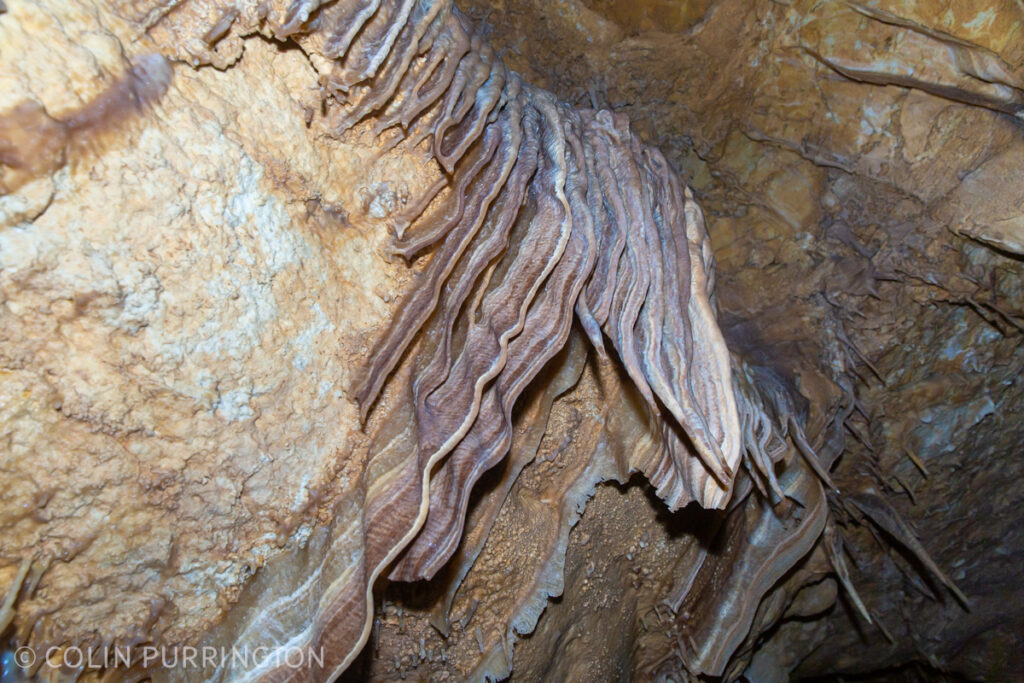
These travertine draperies are fairly common in the cave and bear a striking resemblance to bacon.

Pleasing clumps of crystals. Possibly calcite but I’m not sure.

Here’s a stalactite just about to make contact with the stalagmite below. Maybe another hundred years?
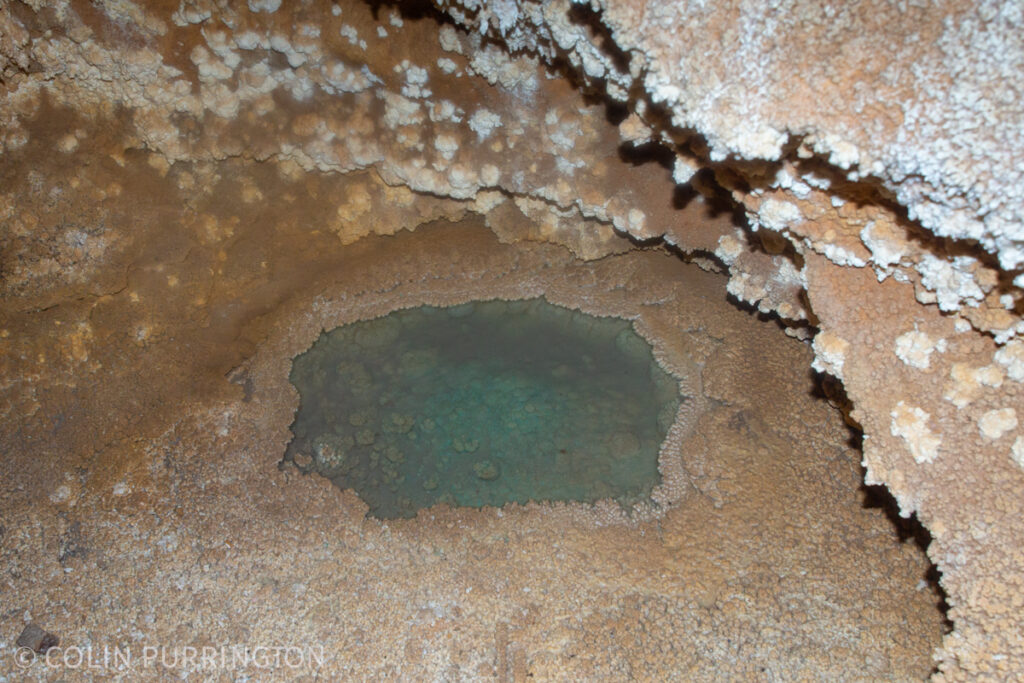
One of several beautiful pools filled with motionless water. Nothing alive in any of them as far as I could tell.

Camel crickets were the only thing I could find alive inside the cave. But they are likely eating something, and more than just each other (which they do). I suspect that visitors to the cave shed enough organic material to support some fungal growth, so perhaps that would be enough to attract a population of crickets. I’d be very interested in spending a few days looking for more life down there. But I suspect I’d have better hunting in other caves. I’d love, for example, to find some of the beetles (Rhadine reyesi) that dig up cave cricket eggs.
More photographs are here if you want to see my full collection (~66).
If you are visiting Big Bend National Park, staying a night near the caves is a great way to break up the drive. Depending on which direction you’re coming from, choose either Sonora or Ozona if you want to be near the caves. And if you can plan ahead, you might consider scheduling a “Discovery Challenge Tour” or a “Photography Tour” instead of taking the canned tour. This would help you avoid crowds and also to hang with like-minded folks, a desire that grew acute during my 90 minute tour. You might need to arrange those a month in advance because the guy who leads them has a life, I’m told.
